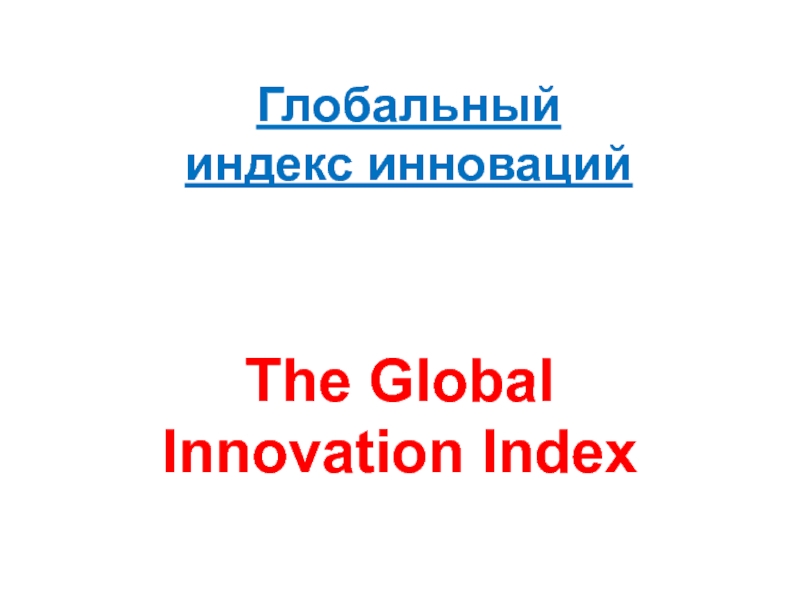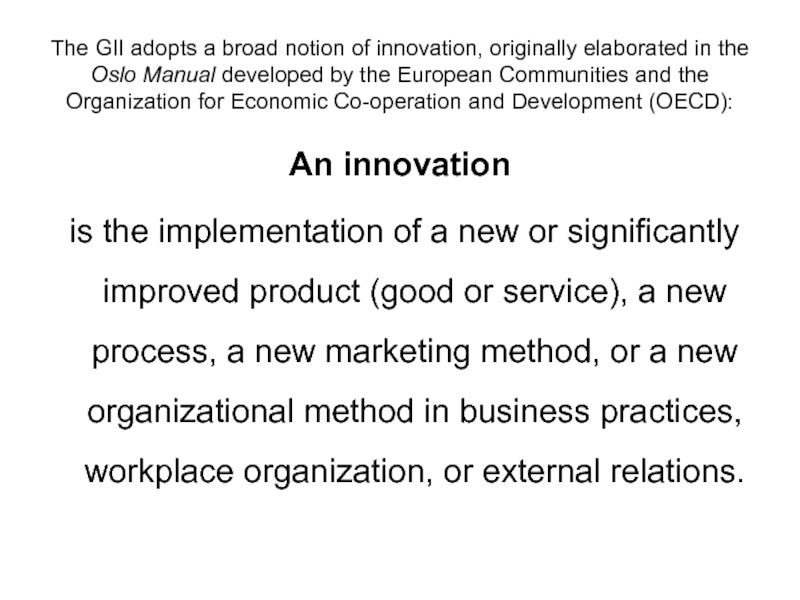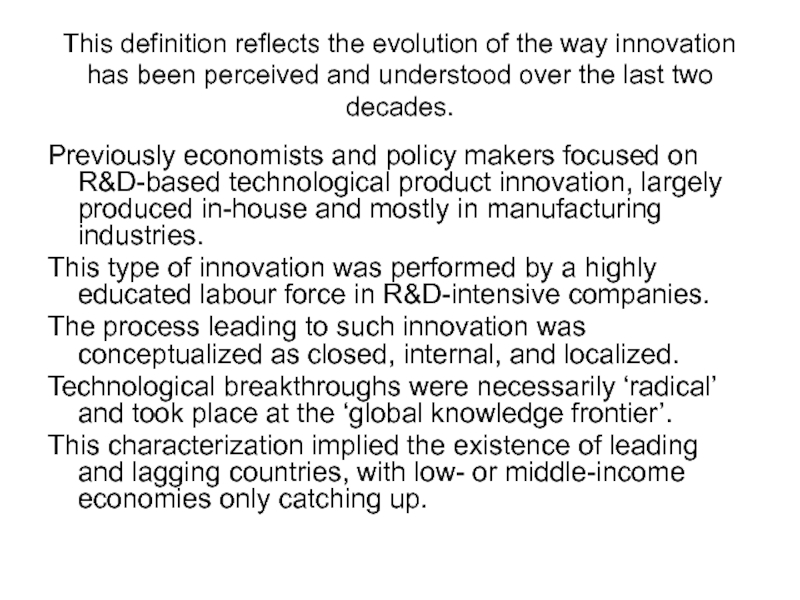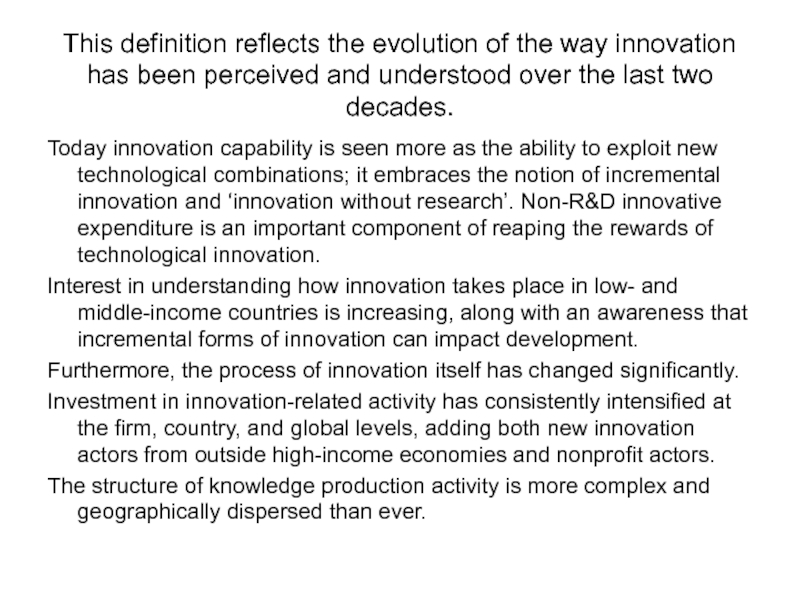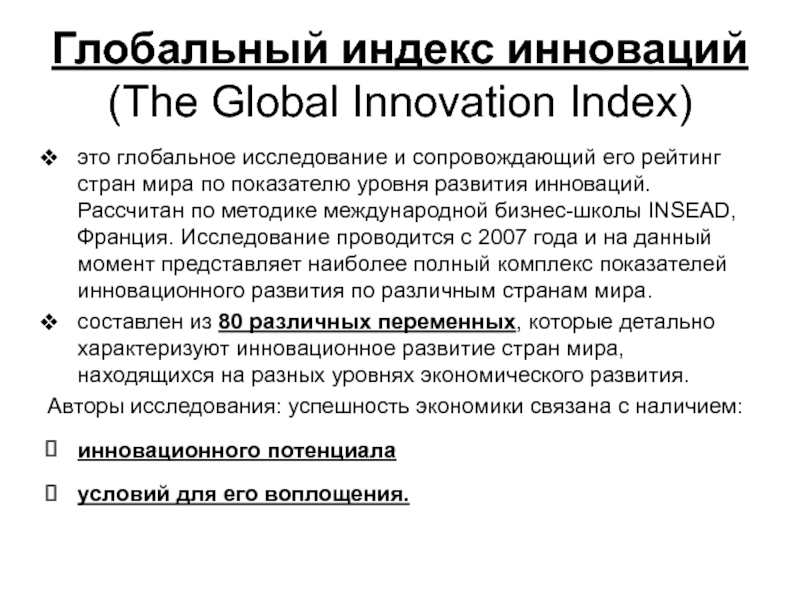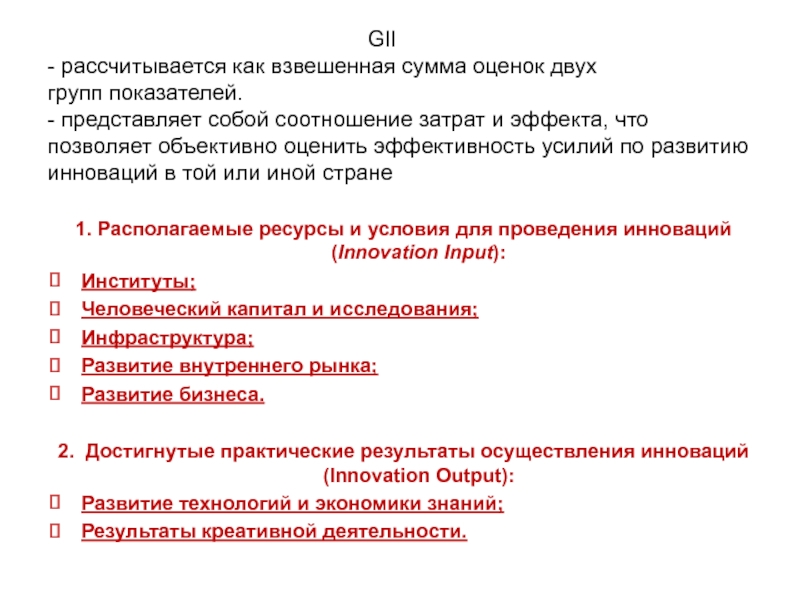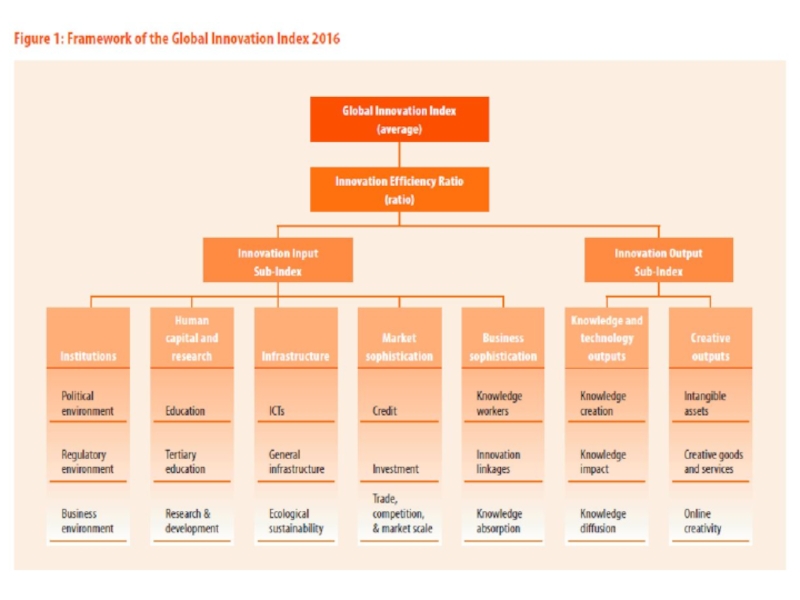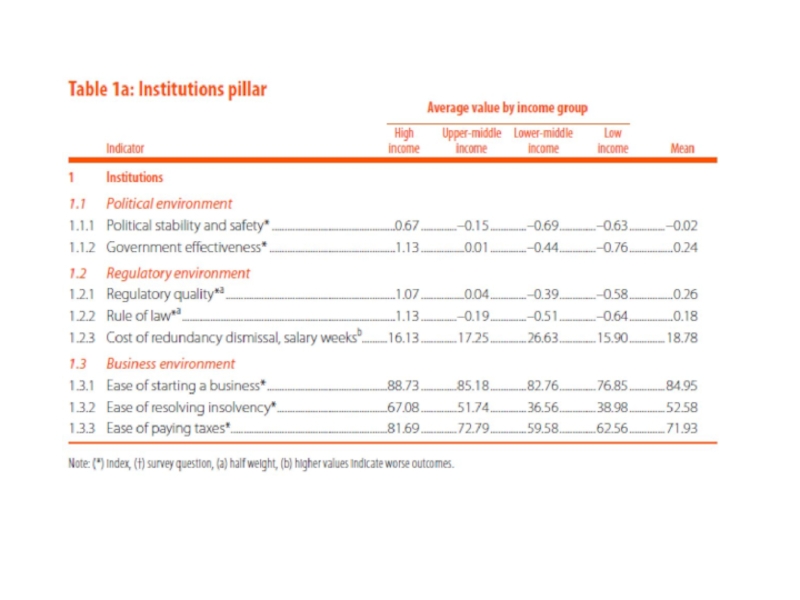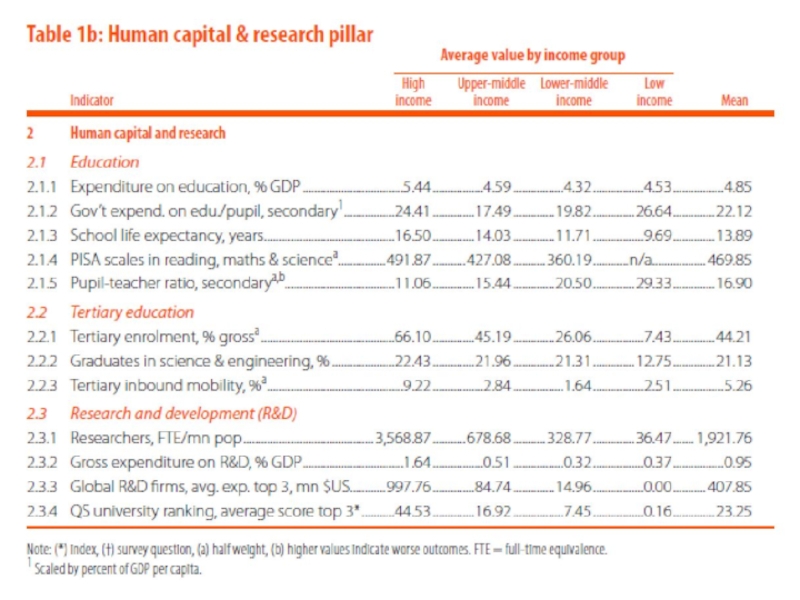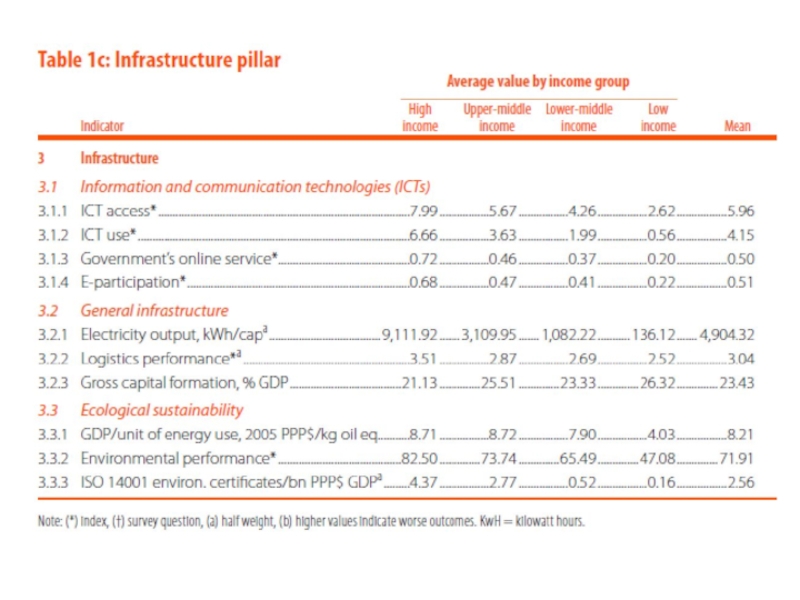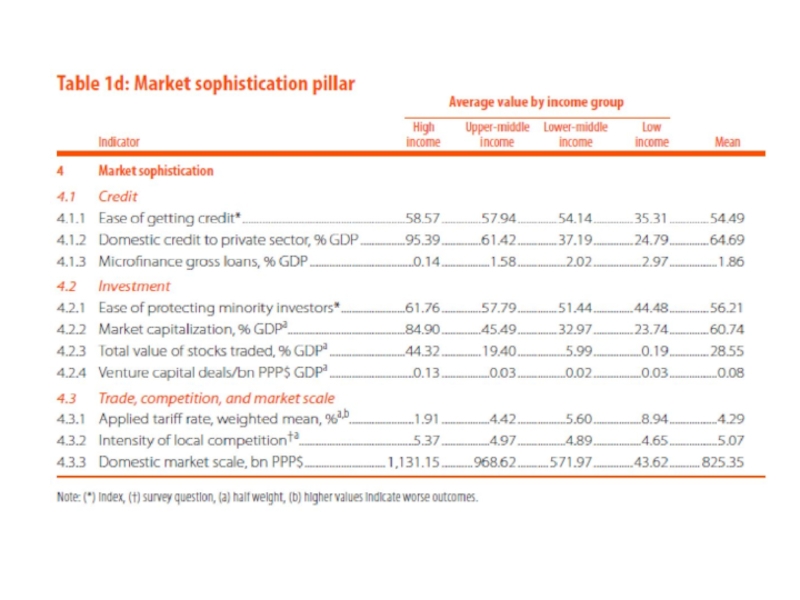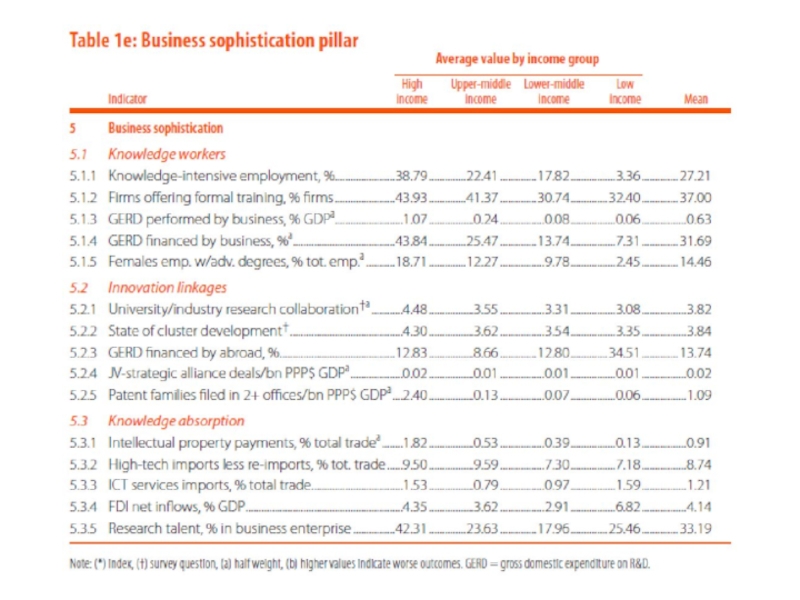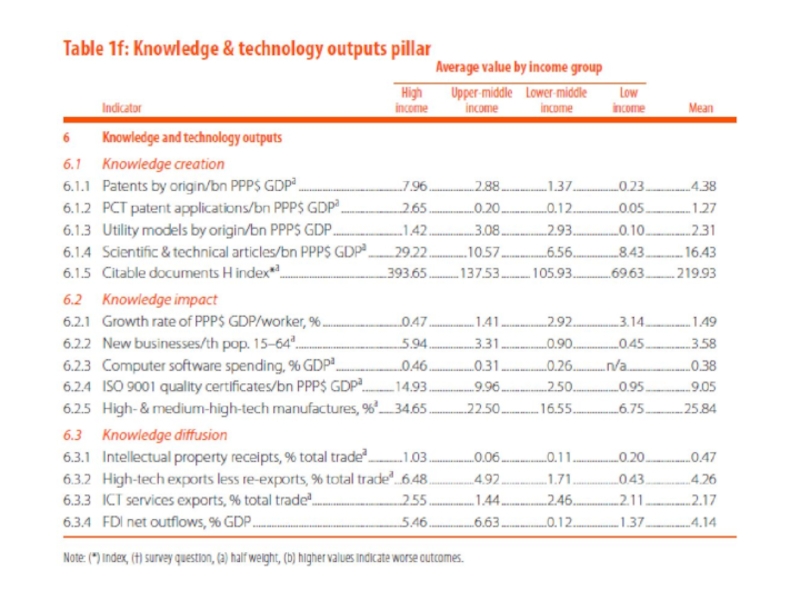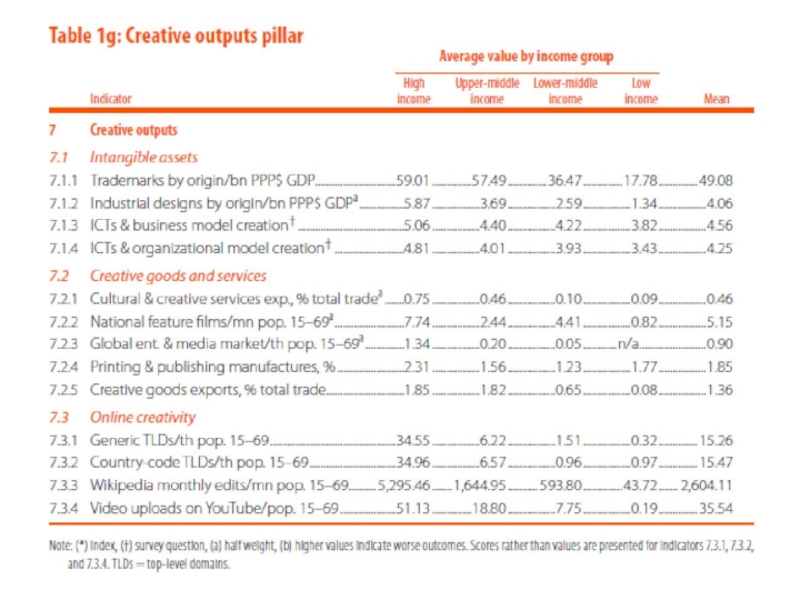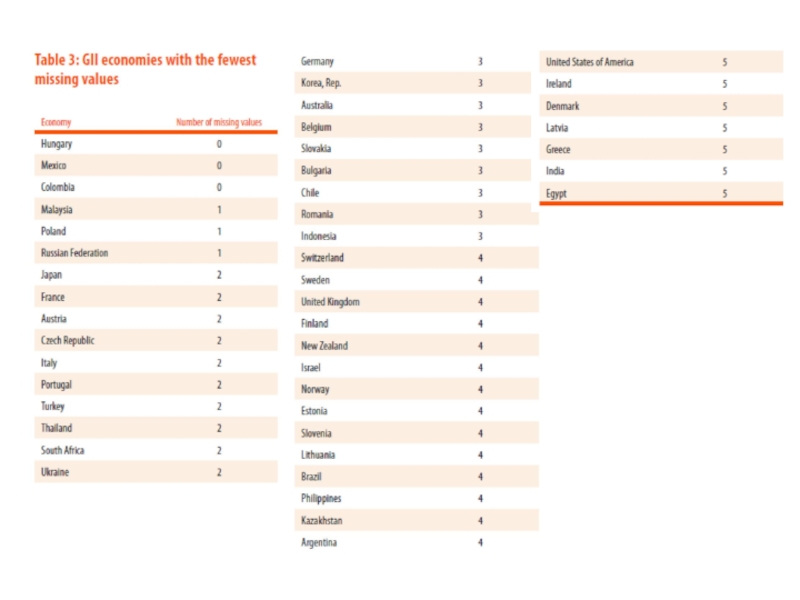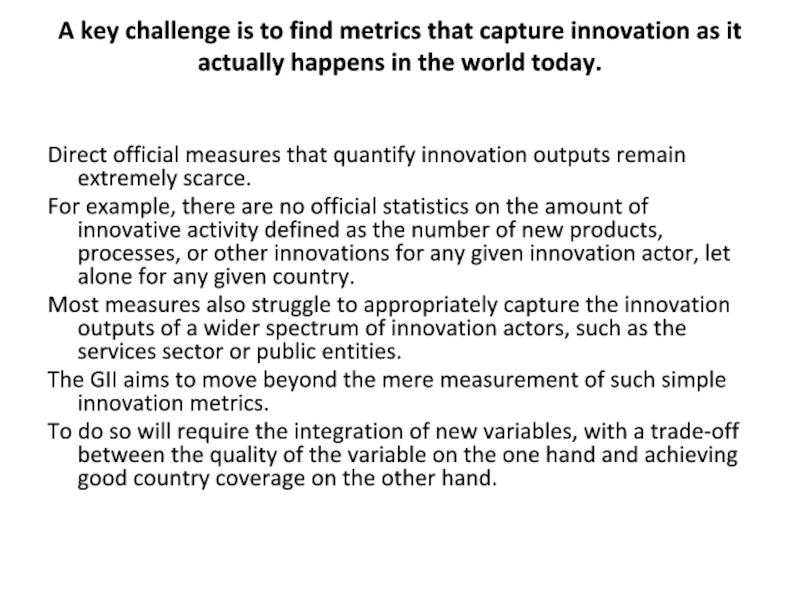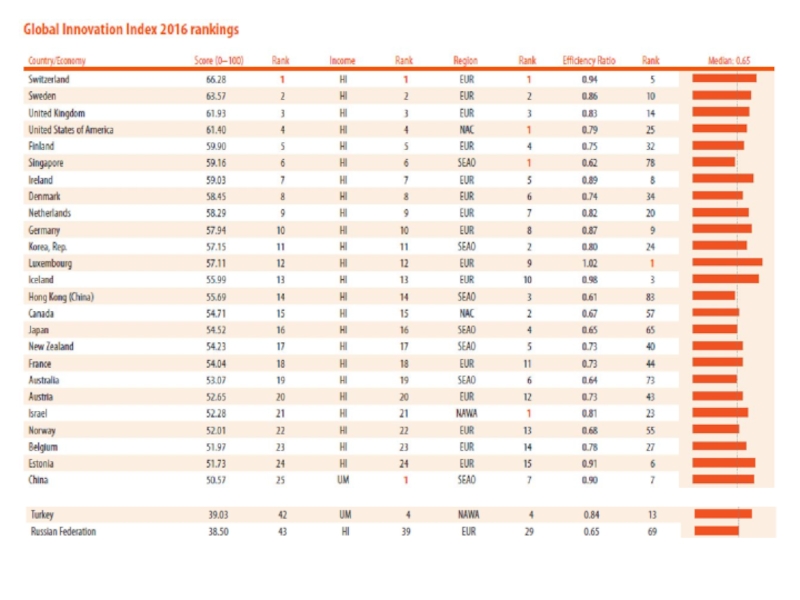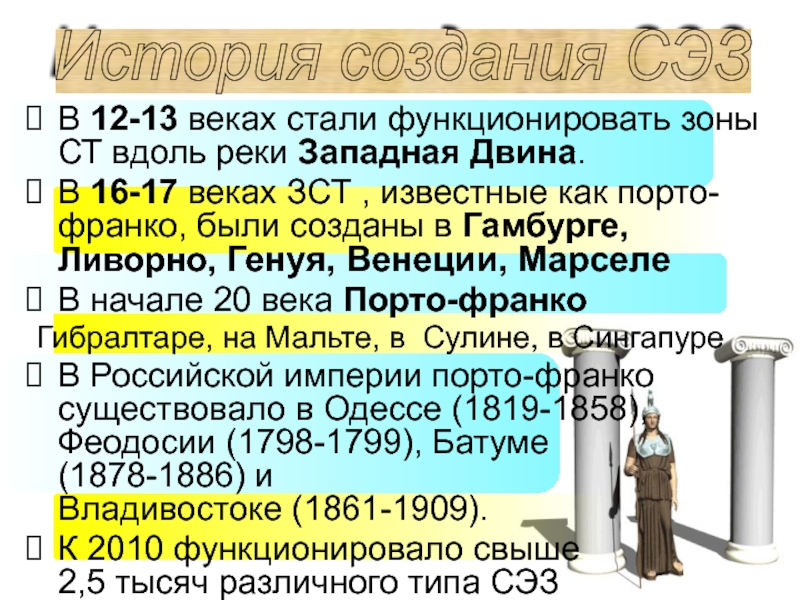- Главная
- Разное
- Дизайн
- Бизнес и предпринимательство
- Аналитика
- Образование
- Развлечения
- Красота и здоровье
- Финансы
- Государство
- Путешествия
- Спорт
- Недвижимость
- Армия
- Графика
- Культурология
- Еда и кулинария
- Лингвистика
- Английский язык
- Астрономия
- Алгебра
- Биология
- География
- Детские презентации
- Информатика
- История
- Литература
- Маркетинг
- Математика
- Медицина
- Менеджмент
- Музыка
- МХК
- Немецкий язык
- ОБЖ
- Обществознание
- Окружающий мир
- Педагогика
- Русский язык
- Технология
- Физика
- Философия
- Химия
- Шаблоны, картинки для презентаций
- Экология
- Экономика
- Юриспруденция
The Global Innovation Index презентация
Содержание
Слайд 2The GII adopts a broad notion of innovation, originally elaborated in
An innovation
is the implementation of a new or significantly improved product (good or service), a new process, a new marketing method, or a new organizational method in business practices, workplace organization, or external relations.
Слайд 3This definition reflects the evolution of the way innovation has been
Previously economists and policy makers focused on R&D-based technological product innovation, largely produced in-house and mostly in manufacturing industries.
This type of innovation was performed by a highly educated labour force in R&D-intensive companies.
The process leading to such innovation was conceptualized as closed, internal, and localized.
Technological breakthroughs were necessarily ‘radical’ and took place at the ‘global knowledge frontier’.
This characterization implied the existence of leading and lagging countries, with low- or middle-income economies only catching up.
Слайд 4This definition reflects the evolution of the way innovation has been
Today innovation capability is seen more as the ability to exploit new technological combinations; it embraces the notion of incremental innovation and ‘innovation without research’. Non-R&D innovative expenditure is an important component of reaping the rewards of technological innovation.
Interest in understanding how innovation takes place in low- and middle-income countries is increasing, along with an awareness that incremental forms of innovation can impact development.
Furthermore, the process of innovation itself has changed significantly.
Investment in innovation-related activity has consistently intensified at the firm, country, and global levels, adding both new innovation actors from outside high-income economies and nonprofit actors.
The structure of knowledge production activity is more complex and geographically dispersed than ever.
Слайд 5Глобальный индекс инноваций (The Global Innovation Index)
это глобальное исследование и сопровождающий его рейтинг стран
составлен из 80 различных переменных, которые детально характеризуют инновационное развитие стран мира, находящихся на разных уровнях экономического развития.
Авторы исследования: успешность экономики связана с наличием:
инновационного потенциала
условий для его воплощения.
Слайд 6
1. Располагаемые ресурсы и условия для проведения инноваций
(Innovation Input):
Институты;
Человеческий капитал и исследования;
Инфраструктура;
Развитие внутреннего рынка;
Развитие бизнеса.
2. Достигнутые практические результаты осуществления инноваций (Innovation Output):
Развитие технологий и экономики знаний;
Результаты креативной деятельности.
Слайд 16A key challenge is to find metrics that capture innovation as
Direct official measures that quantify innovation outputs remain extremely scarce.
For example, there are no official statistics on the amount of innovative activity defined as the number of new products, processes, or other innovations for any given innovation actor, let alone for any given country.
Most measures also struggle to appropriately capture the innovation outputs of a wider spectrum of innovation actors, such as the services sector or public entities.
The GII aims to move beyond the mere measurement of such simple innovation metrics.
To do so will require the integration of new variables, with a trade-off between the quality of the variable on the one hand and achieving good country coverage on the other hand.
